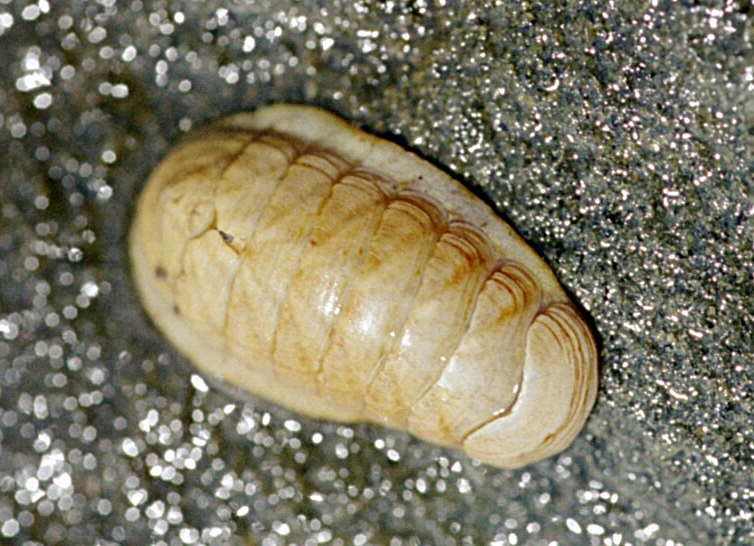
Image from Kenneth S. Norris Rancho Marino Reserve in Cambria, San Simeon, or Cayucos, March 4-6, 2005
Leptochiton rugatus, about 1 cm length, in the intertidal it is often under rocks near the cliffs in shallow warm areas at low tide. It's red foot is due to tissue hemoglobins, otherwise unknown for chitons*. Like other, mostly deepwater lepidopleurids, it's two gill rows encircle the anus in a functionally distinctive arrangement compared with more familiar chitons.
*Eernisse, D. J., N. B. Terwilliger, and R. C. Terwilliger. 1988. The red foot of a lepidopleurid chiton: Evidence for tissue hemoglobins. Veliger 30: 244-247.
Return to Bio317 S05 Fieldtrip to Rancho Marino or Bio 317 Field Marine Biology Home Page
Image above by D. J. Eernisse©2005, red foot image by D. J. Eernisse©1987
Web page created using WebMate HyperCard stack by D. J. Eernisse © 2005 on 6/9/05